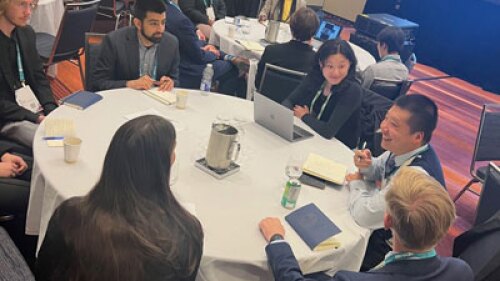The difficulty of obtaining financing for new construction of residential real estate was among the topics explored by an expert panel of top real estate executives at the 2016 ULI Spring Meeting capital markets general session.
“In the last three to four weeks, I have seen more requests for construction loans by developers who had accumulated land assemblages during this cycle but could not get the financing and will have to wait until the next cycle,” commented Greta Guggenheim, chief executive officer at TPG Real Estate Finance Trust.
This is a particular issue in condominium markets, she said, with banks reluctant to make new loans in cities that have already seen significant supply increases, such as New York City and Miami. Guggenheim noted that there currently is a nine-year supply of condominium properties in New York City valued at over $4 million, with sales rates this year already down by an average of 25 percent.
“The haves can have more; the have nots can’t find anything,” echoed ULI Spring Meeting Cochair William Hankowsky, chairman, president, and chief executive officer of Liberty Property Trust, regarding the availability of new finance. Liberty Property Trust has funded its development pipeline through the disposal of assets, Hankowsky said, selling $2.5 billion of assets over recent years, and is planning to sell another $900 million to $1.2 billion of assets this year.
Proceeds from these sales are funding the largest development pipeline in the company’s history, with 30 projects totaling 9 million square feet (836,000 sq m) under construction, he said. The company does not use construction loans or mortgage its assets, instead using unsecured corporate debt to fund its projects.
Gerard Sweeney, ULI Spring Meeting cochair, president and chief executive officer of Brandywine Realty Trust, said the real estate investment trust (REIT) had a similar financing model and had sold $2 billion of assets in 2014 and 2015, using the proceeds to pre-fund its development pipeline. The company has sold $1.2 billion of assets over the past four quarters, he said, and has $800 million in property under construction, with the focus of the portfolio shifting from suburban to urban locations.
Sweeney described the current market as being in the “later stages of the cycle,” with Brandywine being a net seller that is not investing in expensive assets, but instead buying land to position itself for the next cycle.
Hankowsky agreed, but noted that because the last recession was “unprecedented and extraordinary” and the recovery did not really get going until 2011, the cycle may run longer—maybe until 2018 or beyond. However, he highlighted that it was prudent to be prepared for the next downturn.




